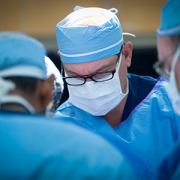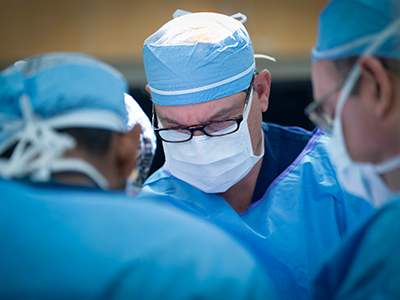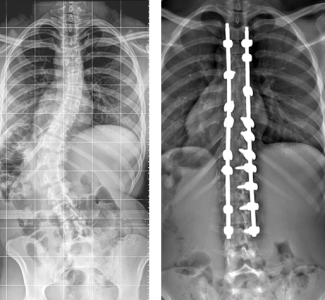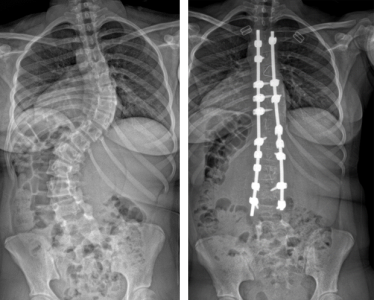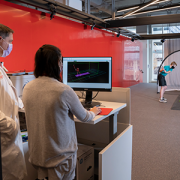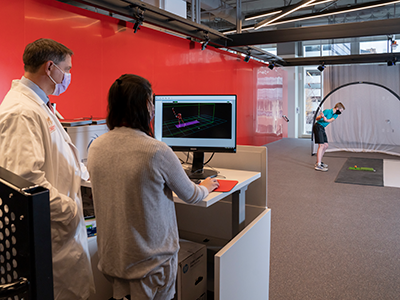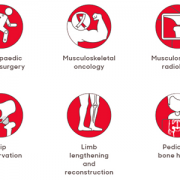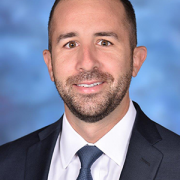Children’s National announces two new professorships
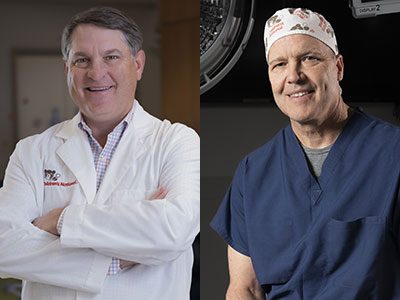
Drs. Oetgen and Kane join a distinguished group of Children’s National physicians and scientists who hold an endowed chair.
Children’s National Hospital named Matthew Evan Oetgen, M.D., as the Joseph E. Robert, Jr. Professor of Orthopaedic Surgery and Sports Medicine. Dr. Oetgen serves as chief of Orthopaedic Surgery and Sports Medicine.
Children’s National Hospital named Timothy Dennis Kane, M.D., as the Joseph E. Robert, Jr. Professor of General and Thoracic Surgery. Dr. Kane serves as chief of General and Thoracic Surgery.
About the award
Drs. Oetgen and Kane join a distinguished group of Children’s National physicians and scientists who hold an endowed chair. Children’s National is grateful for its generous donors, who have funded 48 professorships to-date.
Professorships support groundbreaking work on behalf of children and their families. They foster new discoveries in pediatric medicine. These appointments carry prestige and honor that reflect the recipient’s achievements and donor’s forethought to advance and sustain knowledge.
Dr. Oetgen is a longstanding leader in orthopaedic surgery and sports medicine. Under his leadership, Children’s National opened the Fight For Children Sports Medicine Center in 2021. It provides a wide range of orthopaedic services to help young athletes function at their peak performance. Additionally, his team launched the nation’s first pediatric Spinal Fusion Surgical Home. This program led to significant decreases in average length of stay and patient pain scores for children with idiopathic scoliosis.
“We provide state-of-the-art care to young athletes across the region,” says Dr. Oetgen. “This professorship will help us continue the development of innovative clinical and research programs that streamline care for children with complex orthopaedic needs.”
Dr. Oetgen has authored more than 60 book chapters and publications. He has presented at many major national and international conferences in his field. Dr. Oetgen is also a key member of the multidisciplinary clinical trial team that was the first to apply magnetic resonance guided high-intensity focused ultrasound to non-invasively relieve osteoid osteoma tumors in children.
Dr. Kane works to develop the Joseph E. Robert, Jr. Center for Surgical Care’s minimally invasive surgery program through clinical practice, instruction and research, while improving minimally invasive surgical techniques and speed into standard clinical care for pediatrics. He serves as principal investigator in the Minimally Invasive Therapy Program in the Bioengineering Initiative of the Sheikh Zayed Institute for Pediatric Surgical Innovation. He has specific interest and expertise in minimally invasive thoracic, gastrointestinal and neonatal surgery. Under his direction, the Division of General & Thoracic Surgery developed peroral endoscopic myotomy (POEM), a newer technique to treat esophageal achalasia in children.
“Children’s National performs more POEM procedures than any other children’s hospital in the country,” says Dr. Kane. “I’m grateful for this professorship and look forward to making even more surgical advances in pediatric care.”
The Joseph E. Robert Jr. Trust, through their vision and generosity, are ensuring that Drs. Oetgen, Kane and future holders of these professorships will launch bold, new initiatives. These innovations will help rapidly elevate our leadership in the field of pediatric orthopaedic and general surgery and improve lifetimes for children.
About the donors
The Joseph E. Robert, Jr. Charitable Trust is a long-time champion of Children’s National. It honors the memory of the late Joseph “Joe” E. Robert, Jr. A native of Washington D.C., Joe was an entrepreneur and visionary who believed in the importance of investing in children through education and healthcare. His first gift to Children’s National created and endowed our Joseph E. Robert, Jr. Center for Surgical Care. He was also instrumental in shaping the vision and building support for the Sheikh Zayed Institute for Pediatric Surgical Innovation at Children’s National, created in 2009 with a $150 million gift from the Government of Abu Dhabi.
These professorships embody Joe’s legacy of inspiring others to think bigger and differently to advance pediatric healthcare for children of the Washington, D.C. community and beyond.
“Joe’s legacy is represented through the incredible work being done at Children’s National,” says David Fensterheim, board chair of Fight For Children. “Drs. Oetgen and Kane are trailblazers in pediatric healthcare. We are proud to honor them and their cutting-edge work with this prestigious professorship.”



